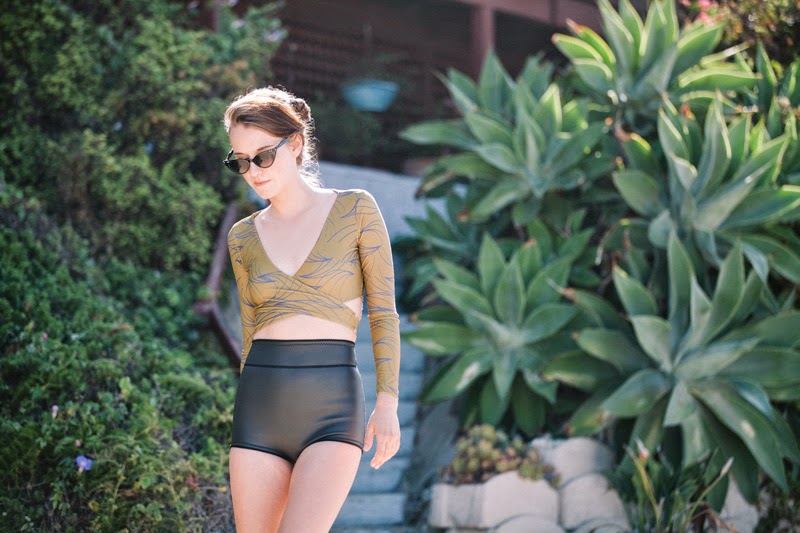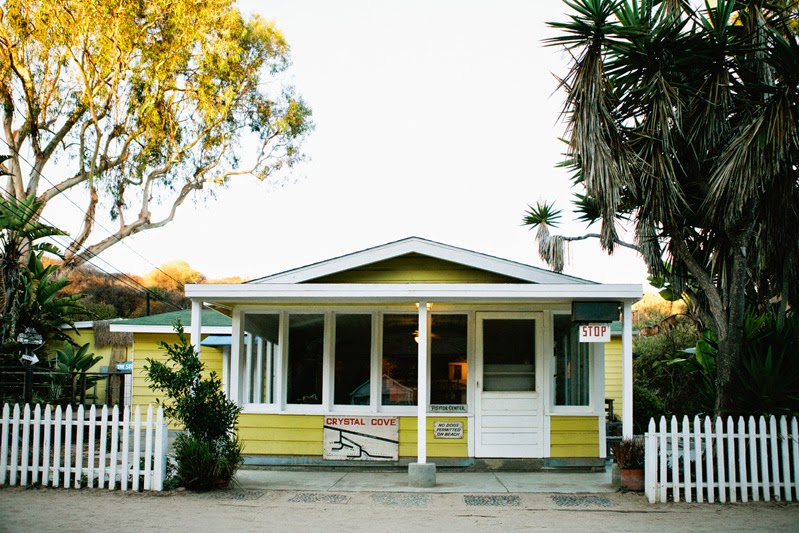Being obsessed with vintage surf culture, we were stoked to go down the rabbit hole with Cori Schumacher, a world championship longboarder and environmental activist, to talk story about some of the unsung heroes of women's surfers, why it’s not that easy to find information about women’s surfing during the 1970s – 1980s, and why right now is an awesome time to be a women surfer.
If you love looking at vintage photos and reading inspiring stories about women surfers, don't forget to check out the
History of Women’s Surfing indiegogo campaign to contribute to the cause. Look out for the Seea packages to get some great gear in gratitude for your donation!
How did you and Sheri come to start the History of Women’s Surf project?Sheri is somebody my mom competed with [in surf] contests while I was a kid running around the beach wreaking havoc. [Now being friends as adults], we’ve had these conversations [about women’s surf history] and thought, “Why don’t we include people in the conversation that we’ve been having?”
Why is it important that women surfers have their own platform to tell their stories?Our culture has underappreciated women and their stories to highlight the heroic narrative of the warrior man who goes out there and conquers the ocean. That’s been the dominant narrative of surfing and competitive surfing has been the focus.
What we’ve seen is a very narrow vision of women’s surfing, as its been controlled by the larger surf brands who have co-opted the surf narrative pretty much since surfing started at the time that "Gidget" emerged. We want to deepen, expand and highlight the fact that there is such a deep rich culture of women’s surfing. We want to do that specifically through personal history. That’s the most powerful voice that human beings have.
Why do you think a lot of these stories were getting lost?For a very long time, the industry wasn’t making money off of women. The media had absolutely no interest in archiving and collecting the stories from women. The image of women’s surfing was just an accessory to a more heroic tale of the male surfer. As we got into the 1990s, the industry and media got to be able to make money off of women because Roxy came about. All of a sudden you have the start of this documentation of women’s surf history. So in the history of our imagination, women’s surfing starts in 1995 with Lisa Anderson.
There are some historians, like Matt Warshaw, who have highlighted women who were top of their game: Joyce Hoffman, Linda Benson, Margo Oberg, but its like three pages out of 1,000. Julie Cox has done the exhibit, Women and the Waves at the California Surf Museum in Oceanside, and we’re building off of those and trying to push deeper.
What is the state of surf culture now that is craving these women’s surf stories?I think there’s a fundamental shift in what we appreciate in surf culture. We’re no longer taking what the industry gives us. The thing by which surfing is judged is the male professional surfer. I think people are shifting to a different expression on a wave and shifting how we value surfing. That shift is absolutely essential to valuing women’s surfing.
Women surf differently than men. It’s more an immersion and harmony with the wave. Men do it to, on longboards mostly — the flow with, rather than the domination of. When you have women who are trying to surf like men, because that’s the valued position and that’s what they’re judged on, you lose the creativity that comes with being outside of that box.
The rise of Seea, for instance, the rise of smaller brands that are more connected to the core and the community, the whole reason these brands are able to flourish is this desire to reconnect with that core experience of what surfing is.
 |
Cher Pendarvis, 1969, with her arc tail twin fin, made by Cher and her friend Tom.
Photo: T. Threinen |
Thank you Cori! We agree, there is definitely a cultural shift of surfers expanding their vision outside of competitive surfing, and even the types of boards they are riding. One story that you’ve been involved in sharing is Cher Pendarvis, one of the first female surfboard shapers. Tell us more about Cher!Cher Pendarvis is somebody who I’ve grown up with. I’ve known her for a long time and I had no idea that she was the very first female staff member at Surfing Magazine. No idea about the fact that she was part of the crafting of boards. We look at making boards as something that is very male oriented. She made the fins and glassed the boards that Jimmy Blears rode, which catapulted the fish shape into the surfing mainstream consciousness. She’s been quietly working and doing her thing for a very long time.
The Autry Museum in Los Angeles held a
California Designing Women Show from August 2012 through January of 2013. It showcased female designers from 1896 to 1986. Cher was one of the recipients of the prestigious Henry Award, which recognizes excellence in design awarded by the design community. She won for a 1976 surfboard she designed. This was the only surfboard featured in the exhibit. Cher said she was honored to win the award, but she also said, "it meant a lot to have surfing represented in the show with all the other wonderful awards." Cher constantly defers to the importance of surfing rather than spending any time ruminating on her own astounding contributions.
Jericho Poppler Champion Woman Surfer from
The Inspire Initiative on
Vimeo.
You’ve mentioned Jerico Poppler as a woman who’s also progressed the sport of women’s surfing. What's her story? Jerico Poppler, again somebody I grew up with and surfed with on the beach, super eccentric, outgoing woman. She was a founding member of WISA (Women’s International Surfing Association) and they established that women’s surfing was a desirable, marketable activity. They got the IPS (the precursor to the ASP) to actually add women’s surfing because of the work that they did.
Jerico was a founding member of the Surfrider Foundation, founding member of the Golden Girls, the women's answer to the Australian "Bronzed Aussies" which sought to legitimize surfing as a sport. She pushed pretty hard to get into the Surfing Walk of Fame. One of the things she kept coming up against was there’s no documentation that you did what you said what you did. No one printed the names of women or the things that they did in surf media, so there’s “no documentation” of the reasons why this person deserves to be in the Surfing Walk of Fame, which I find utterly ridiculous and profoundly wrong. It’s another part of why we’re doing this project.
What are some examples of how women were misrepresented by surf media, and how you want to change that story? Pearl Turton, the first nationally recognized champion in Australia (1963) was featured in the "Endless Summer." The way they presented her was absolutely ridiculous and embarrassed the heck out of her. Just after showing the heroics of men surfing Waimea, the boys decide to surf a Sydney break when Pearl walks by in a bikini bottom that shows the top of her crack. The entire section is a ridiculous portrayal of "boys will be boys" and "girls are there to ogle" goofiness that diminishes and trivializes Pearl.
This is par for the course for actually quite a few women we’ve come into contact with. They get ridiculed in media and they drop underground.
[On the other hand,] Mary Lou McGinnis Drummy, the first president of WISA was a movie in 1969 called "Follow Me." It was based a lot on the "Endless Summer" and she was put in there during a time when women weren’t shown at all in grassroots surf films except as props. There were only three characters and she was one of the first women to have a lead in a grassroots surf film, not "Beach Blanket Bingo" stuff.
What about the History of Women’s Surfing before the boom of the 1950s-1960s?We also want to highlight the emerging scholarship on global surf history. I've been getting further fascinated by the stories of pre-Western contact surfing. There was a tradition in Japan of riding waves on bellyboards (like paipos) that existed for at least 100 years prior to WWII blokes bringing over their boards. The oldest recorded proof being from 1821!
Right now, there is a South African group of women who are pulling together their history for us, and we are also looking to highlight pre-colonial times when, for instance, Peruvians would surf little reed boats [called caballitos de totora, "ponies of reed"]. Scholarship has shown that Peruvian surf history is actually older than Hawaii. Even though we look to Hawaii as the birth of surf culture, it’s not the only place that had this type of riding.
An indigenous surf historian in Australia and a surf historian here in the United States is going to be collecting historical information as well. We’re really trying to dig deep as far as a whole collage and perspective.
You’re collecting donations on indiegogo to try and get all these stories and more out into the world. What can people be a part of by donating to the History of Women’s Surfing site?
The funds we’re asking for now is going towards website maintenance for next five years, and the magazine archiving. We’re really thankful for Sunshine Makarow who is the publisher for "Surfing Life for Girls" and Marylin Edwards, publisher of "Wahine" who donated full collections of their respective magazines that we’re going to put online.
We need cameras, microphones, and to travel to be able to film and collect the stories. We also want to do long-term membership. We will have some public information online and some stories that are behind [a paywall]. Like a museum, it’s not free all the time. We want the archives to have value. To get photographs and content, you have to pay for the use of those.
For me, I’m second generation surfer. My mom surfed. I grew up with surfers, I know Rabbit Kekai, who is direct connection to Duke Kahanamoku. Those guys, and women, are starting to pass away. I’m starting to appreciate it doesn’t matter how much money you make, it doesn’t matter how much you accomplish. The greatest gift we can give to the next generation is our wisdom, what we’ve learned and our stories are the most important thing we have, how we tell them and who we tell them too.
Thanks so much Cori! We are excited to continue sharing women's surf stories throughout history with you. Friends of Seea, don't forget to check out the campaign to donate! In addition to special Seea perks, art by Andy Davis, handplanes by Jon Wegener and historical photograph prints are also up for grabs.
 The 1930s and 1940s was the golden era of Crystal Cove as a summer haven, making it a perfect location for a vintage-inspired Seea photo shoot. Join our shoot with photographer Gabe Sullivan at this historic California beach.]]>
The 1930s and 1940s was the golden era of Crystal Cove as a summer haven, making it a perfect location for a vintage-inspired Seea photo shoot. Join our shoot with photographer Gabe Sullivan at this historic California beach.]]>





























